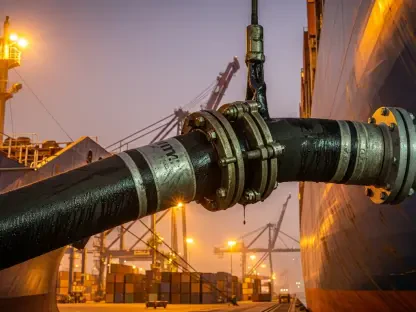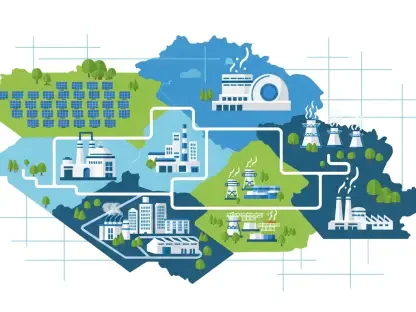Oil prices saw a significant increase recently, reaching a two-week high driven by new U.S. sanctions targeting Chinese importers of Iranian oil. Brent crude futures climbed by $1.18, marking a 1.8% rise to $65.85 per barrel, while U.S. West Texas Intermediate crude advanced by $1.14 or 1.9% to $62.47, touching their highest levels since the beginning of April.
Washington’s intensifying pressure on Tehran aims to reduce Iranian oil exports to zero. The latest sanctions target entities, including a China-based refinery, indicating a strategic move in the geopolitical landscape. These sanctions coincide with renewed negotiations between the U.S. and Iran concerning Iran’s nuclear program. Amid these talks, Iran’s Foreign Minister Abbas Araqchi firmly stated that Iran’s uranium enrichment rights remain non-negotiable, underscoring the country’s steadfast stance ahead of upcoming discussions in Rome.
Impact of Sanctions on Oil Prices
Renewed U.S.-Iran Negotiations and Strategic Sanctions
The U.S. sanctions against Chinese importers of Iranian oil reflect Washington’s broader intent to further cripple Iran’s oil exports. By targeting a China-based refinery, the sanctions signal a strategic maneuver aimed at constricting Iran’s lifeline to the global oil market. These measures are happening in parallel with renewed negotiations over Iran’s nuclear program, suggesting a careful orchestration by the U.S. to achieve its international policy goals. The assertion by Iran’s Foreign Minister Abbas Araqchi on the non-negotiability of uranium enrichment rights sets a hard line in the upcoming diplomatic discussions.
Simultaneously, a corroborative effort by OPEC emerges, with updated plans from Iraq, Kazakhstan, and other oil-producing countries proposing additional cuts in oil output. These adjustments adhere to previously agreed quotas and have a consequential impact on oil futures. Such moves indicate a collective intent to stabilize the market and harmonize production levels with global demand, framing a complex tapestry of geopolitical strategies impacting oil prices.
OPEC’s Role and Market Adjustments
OPEC’s role in shaping oil prices cannot be understated, especially given the recent updates to production cuts by members like Iraq and Kazakhstan. The proposition for additional oil output reductions is designed to adhere to agreed-upon quotas, a critical mechanism to influence oil futures positively. The recalibration of production levels among OPEC members aligns with broader market expectations, aiming to stabilize prices amidst fluctuating demand. These concerted efforts reflect an ongoing strategy to navigate the uncertainties introduced by geopolitical tensions and economic sanctions.
Furthermore, U.S. crude inventories have reported an increase of 515,000 barrels, slightly above the analyst expectations of 507,000 barrels. This rise in crude stockpiles comes as gasoline and distillate inventories simultaneously decrease, presenting a nuanced picture of market adjustments. The slight uptick in crude inventories contrasts with the reductions in other stocks, indicating a complex interplay of supply and demand factors influencing overall oil market stability.
Trade Wars and Economic Implications
U.S.-China Trade Tensions and Inflation Risks
The geopolitical arena has been dominated by U.S.-China trade tensions, which have significant implications for oil prices and economic stability. President Donald Trump’s decision to raise tariffs on Chinese goods has elicited retaliatory measures from Beijing, creating a cycle of economic friction. Federal Reserve Chair Jerome Powell has highlighted that these tariff hikes are poised to contribute to higher inflation and slower economic growth, fostering uncertainty in oil futures.
China’s GDP growth for the first quarter impressively outperformed expectations, registering at 5.4% compared to the forecasted 5.1%. Despite this positive figure, market analysts express caution over the sustainability of this growth trajectory amid ongoing trade conflicts. The persistent trade war harbors potential long-term impacts on global economic growth, with inherent concerns surrounding oil demand. The ripple effects of tariff escalations might materialize in a significant downturn if global GDP growth contracts.
Forecasts and Market Perspectives
Banks such as UBS, BNP Paribas, and HSBC have responded to these developments by revising their crude price forecasts downward. The revised outlooks resonate with broader market sentiments that foresee potential contractions in oil demand growth driven by global economic uncertainties. Rystad Energy’s Janiv Shah has forecasted that if the trade conflict severely hinders global GDP growth, oil demand growth might plummet drastically. The pre-tariff estimates of oil demand growth, pegged at higher figures, could potentially halve to around 600,000 barrels per day by the next quarter.
Strategists and market analysts underscore the importance of resolving trade disputes between the U.S. and China as a pivotal mechanism to stabilize the global economy. The consensus among experts suggests that alleviating these tensions would mitigate adverse economic impacts and subsequently bolster oil demand growth. A harmonious resolution in the trade war context is seen as a crucial step towards fostering a more stable and predictable global economic environment.
Navigating Future Dynamics
Strategic Collaboration and Market Stabilization
Amid ongoing uncertainties, strategic collaboration among international entities and organizations emerges as a critical factor in stabilizing the oil market. Resolving trade disputes and recalibrating production quotas represent key mechanisms to foster global economic stability. The collective efforts of OPEC members, combined with diplomatic navigations regarding Iran’s nuclear program, underscore a multifaceted approach to mitigate volatility in oil prices.
Economic Resilience and Future Outlook
The U.S. sanctions against Chinese importers of Iranian oil reflect Washington’s strategy to severely limit Iran’s oil exports. By focusing on a refinery in China, the sanctions aim to cut off Iran’s vital access to the global oil market. This is happening alongside renewed negotiations over Iran’s nuclear program, indicating a calculated effort by the U.S. to meet its international objectives. Iran’s Foreign Minister Abbas Araqchi insists that uranium enrichment rights are non-negotiable, setting a firm stance for future diplomatic talks.
At the same time, OPEC is making coordinated efforts to adjust oil production. Iraq, Kazakhstan, and other oil-producing nations have updated their plans to reduce output, adhering to previously agreed quotas. These changes are influencing oil futures and show a collective intent to stabilize the market while aligning production with global demand. These intertwined geopolitical strategies are complicating the landscape of oil prices and international diplomacy, underscoring the careful and multifaceted approaches taken by these nations.









